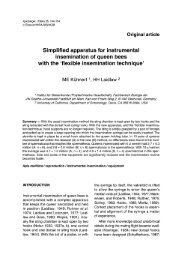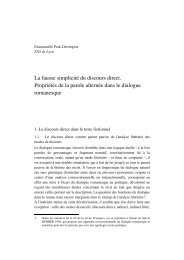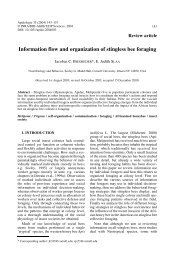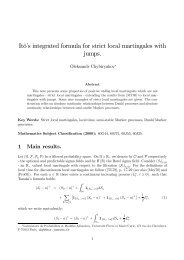ARBEITSGEMEINSCHAFT DER INSTITUTE FÜR ... - HAL - INRIA
ARBEITSGEMEINSCHAFT DER INSTITUTE FÜR ... - HAL - INRIA
ARBEITSGEMEINSCHAFT DER INSTITUTE FÜR ... - HAL - INRIA
You also want an ePaper? Increase the reach of your titles
YUMPU automatically turns print PDFs into web optimized ePapers that Google loves.
SUMMARY<br />
Studies of the populations and honeydew excretion of two Callaphididae<br />
The populations of Eucallipterus tiliae and Tuberculoi’des annulatus were<br />
studied in the field at Celle. The numbers of aphid- &dquo; ied considerably depending<br />
on the site of the host tree and probably on the p .ysiology of the tree. In the<br />
course of each year there was a characteristic change in the numbers of aphids<br />
with a peak in June and July. Every second year the density of the populations<br />
was distinctly high.<br />
The amount of honeydew excretion depended upon the site of the host tree<br />
and the season and varied between the years. The excretion per individual seemed<br />
not to be determined by the numbers of aphids nor by the weather. During<br />
larval development, E. tiliae excreted on the average 7 mg and T. annulatus<br />
5 mg honeydew dry weight. Over 24 hours the honeydew production reached its<br />
maximum in the evening. The amount of honeydew from a whole tree per year<br />
varied between 2 and 50 kg dry weight, most of it produced in June and July.<br />
The honeydew of T. annulatus contains mainly sucrose and was preferred<br />
by the bees to that of E. tiliae with similar concentrations of sucrose and melizitose.<br />
RÉSUMÉ<br />
Etude des populations et de l’excrétion de miellat de deux Callaphididae<br />
Les populations d’Eucallipterus tiliae et de Tuberculoides annulatus ont été<br />
étudiées en champ à Celle. Le nombre des aphides varie énormément selon la<br />
localisation de l’arbre hôte, probablement en raison de la physiologie de l’arbre.<br />
Au cours de chaque année, il y a un changement caractéristique dans le nombre<br />
d’aphidiens, avec un maximum en juin et juillet. Au cours de la deuxième année<br />
la densité des populations est nettement plus élevée.<br />
La quantité de miellat secrétée dépend de la localisation de l’arbre hôte,<br />
de la saison et varie d’une année à l’autre. L’excrétion par individu ne semble<br />
pas déterminée par le nombre d’aphides ni par le temps. Au cours du développement<br />
larvaire, E. tiliae excrète en moyenne 7 mg et T. annulatus 5 mg de substance<br />
sèche. Sur 24 h, la production de miellat atteint son maximum dans la<br />
soirée. La quantité de miellat d’un arbre par an varie entre 2 et 50 kg de substance<br />
sèche, la majorité étant produite en juin et juillet.<br />
Le miellat de T. annulatus renferme plus de saccharose et les abeilles le<br />
préfèrent à celui d’E. tiliae pour les mêmes concentrations en saccharose et mélézitose.




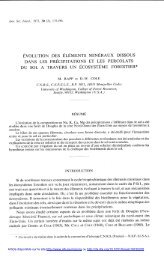
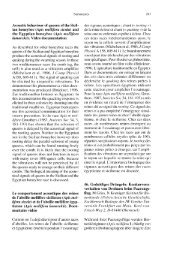
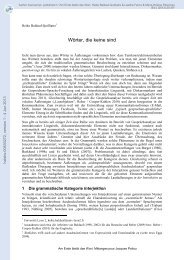
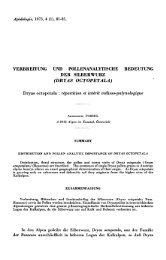
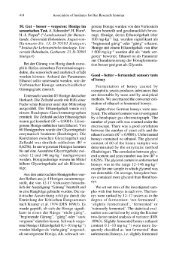
![4 C]-Polyethylenglykol bestimmt, der - HAL - INRIA](https://img.yumpu.com/22454280/1/177x260/4-c-polyethylenglykol-bestimmt-der-hal-inria.jpg?quality=85)
